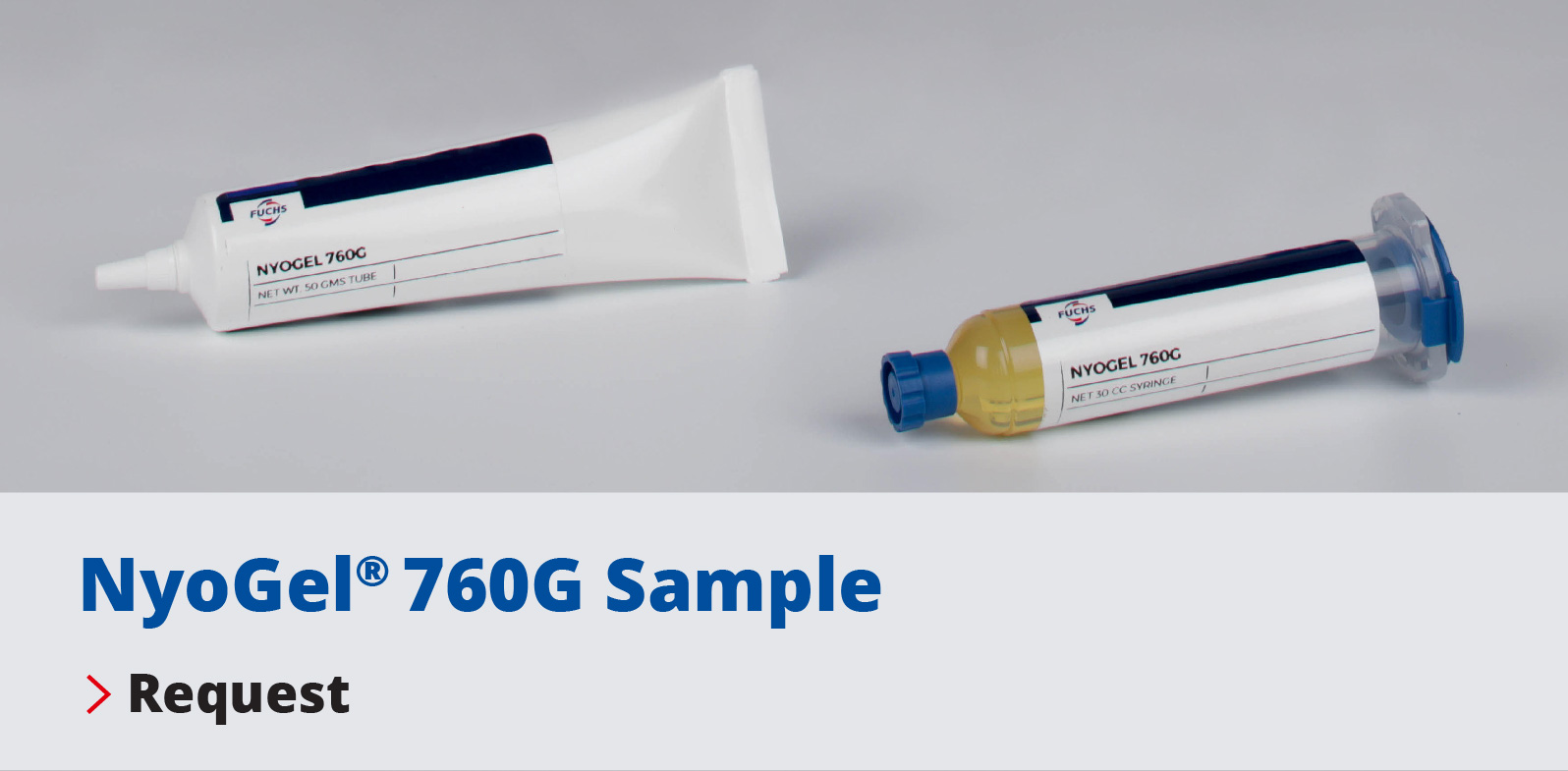The 4 Biggest Connector Problems and How to Solve Them
Electrical connectors are a crucial part of virtually every electrically powered and controlled product. Unfortunately, connectors are also the source of many potential problems. This e-book will explore the various root causes and failure mechanisms of electrical connectors and how they can be avoided.
The future is electric. This is due in large part to the proliferation of smart, environmentally friendly electric technologies that send more signals, process more data, and make more decisions, than ever before. These technologies are supported from dozens to hundreds of electrical connections that each represent a potential failure point within the system.
Failure of electric components, from short circuit to continuity loss, can cause problems ranging from nuisance to increased warranty costs to critical safety problems.
If consumers are going to invest in new technologies, they must work reliably for manufacturers to maintain customer satisfaction. Even a non-safety related recall can have a negative impact on the perceived quality of your application and your brand’s reputation.
The loss of continuity across the connectors/contacts can be catastrophic and potentially result in a host of safety issues including failed steering and braking systems in electric vehicles, appliance fires, and medical device failures.
Type of Connections
Each type of connection faces unique challenges that can lead to connector failure.
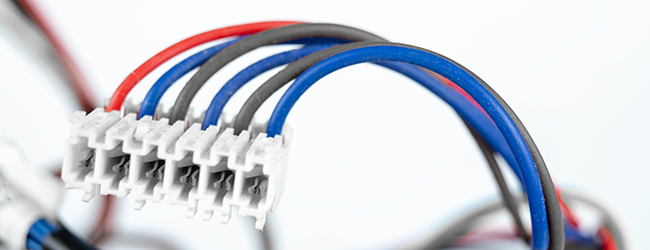
Battery terminals are often found in automotive and power tool applications where environmental factors can impact electrical reliability. If not protected, salt and dirt can corrode battery terminals; causing either an open connection or a short between positive and negative terminals. Moisture intrusion can have a more immediate effect and cause an instantaneous short circuit as well.
Multipin connectors range in size. Each contact pin requires a certain mating force the more pins (bigger the connector) force that is required to mate them which can cause wear and ergonomic issues. They are also at risk for fretting corrosion during storage and operation.
Condensation or moisture can easily pool on the flat surface of a PCB and cause a short circuit. Dirt can also gather and corrode the PCB contacts over time.
USB connectors experience more frequent insertions than other types of connectors. This can lead to more contact wear if not properly lubricated. Like the multipin connectors, USB connectors are also exposed to fretting corrosion during storage and operation.
Types of Connector Failures
There are three types of electric power and electronic control system failures that connectors can cause: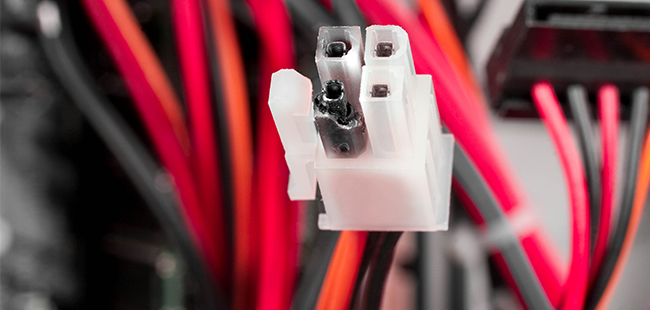
A short circuit occurs when there is an unintended connection between at least two pins in a connector. A short circuit can take the form of a blown fuse, a signal fault, or in extreme cases, an electrical fire. Short circuits are often caused by moisture intrusion and terminal corrosion that bridges the distance between the terminals.
Open connections happen when an electrical path has been broken and current ceases to flow. As a result, there is no power or signal being transferred. An open connection may be caused by a loose connection or excessive terminal oxidation that greatly increases resistance.
Wear and corrosion of the terminals can increase the resistance between two connectors. For low power data connectors this can result in faulty signal readings or signal loss. For high power connectors the flow of current through this resistive connection can create heat and even may cause fires.
Causes of Connector Failures
Mating force, moisture, corrosion, and fretting are all common causes of connector failure. Luckily, all of these issues can be prevented with a thin layer of connector grease.
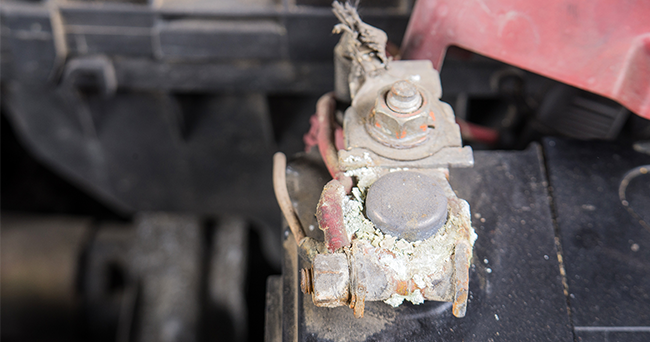
Increased mating force can cause misalignment during assembly and lead to an incomplete connection or damage to terminals.
Increased mating force can cause misalignment and/or wear at the metal plating. For multi-pin connectors, mating forces increase significantly which can create ergonomic and safety issues during assembly.
How Grease Helps
A thin film of lubricant reduces friction to ease mating force by as much as 80 percent.
A lot of moisture can cause an immediate short-circuit whereas a small amount can corrode the connector surface over time.
Moisture can corrode the terminal surface over time or even cause an instantaneous short circuit. Moisture can take the form of water, detergents, humidity, or salt spray.
How Grease Helps
Connector grease repels water from the connector surface. Connector grease is hydrophobic, meaning it stays in place rather than being washed away over time.Grease also prevents current leakage in conductive environments, such as water, to ensure consistent connectivity. A connector grease can also create a seal for the connector to prevent water ingress at the housing interface.
When a contact corrodes, insulative oxides form on the terminal surface which results in increased resistance, signal loss and component failure. The corrosion can also be conductive and builds up to a point where it bridges the distance between two terminals and creates a short circuit.
Even with specially designed housings, there is a risk that dust, dirt, or another form of debris could find its way to the contact pin. When this happens, it can interfere with conductivity and lead to a connection that is not solid. Harsh chemicals can also corrode the metal surface and eat away at the pin’s metal plating.
How Grease Helps
Magnets attract, greases don’t. Grease creates an environmental barrier to keep dirt and debris away from the contact surface. PFPE lubricants are recommended to offer protection in the presence of harsh chemicals.
Fretting corrosion is the result of micromotion caused by vibration and/or thermal expansion due to heating or cooling cycles. These micromovements wear down through the metal plating into the base material that then becomes oxidized.
As this oxide layer builds up and increases, the oxide film acts as an insulator between the contacts. This creates an open circuit resulting in voltage drop across the terminal and ultimately, power failure or signal loss.
How Grease Helps
Reduces physical wear between the connecting surfaces as they undergo micromotions and fretting wear. This preserves the plating on the connectors, designed to prevent oxidation and minimize resistance.
Grease also protects the system from the surrounding environment, preventing the build-up of insulative oxide layers which are ultimately responsible for resistance increase and signal loss.
Case Study
Commercial vehicles are operated for extensive periods of time under a variety of environmental conditions and depend on reliable components that require shortened and/or infrequent servicing. These vehicles are continuously exposed to road spray, which in the winter contains corrosive salts and chemicals. If a battery or starter terminal were to become corroded, it could cause unwanted downtime as the driver would be unable to start the vehicle or the electronics controls would fail to operate properly.
Learn how Nye helped an OEM find a lubricant with the right water spray resistance properties to extend the life of their battery, starter and alternator terminals, and ground straps to protect them from corrosion.
Select Your Connector Grease
Nye Lubricants, a member of the FUCHS Group, has a complete line of dielectric greases designed specifically to address application requirements for contact protection, insertion force, sealing, temperature limits and material compatibility.
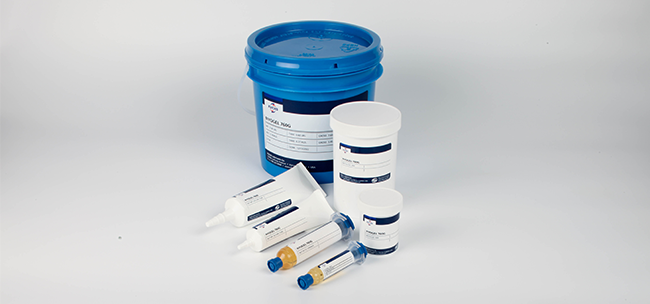
Leading connector grease across several industries with specification at a wide-range of leading OEM's. Good fretting corrosion protection and dielectric isolation capabilities. Common connector material compatibility.
Similar performance as NyoGel® 760G, with a higher maximum temperature capability of 175 °C.
Formulated to offer outstanding dielectric performance, reduction of insertion force, and fretting wear protection as well.
Recommended for applications with high operating temperatures up to 225 °C. Compatible with a wide range of plastics and elastomers. Excellent insertion force reduction
The Proof is in the Performance
Conclusion
Electrical connectors are an essential component of all electrical products. Environmental influences such as moisture and vibration can negatively affect the reliability of the electrical connections and may result in product failures. These issues can be eliminated by using specially formulated connector greases.


